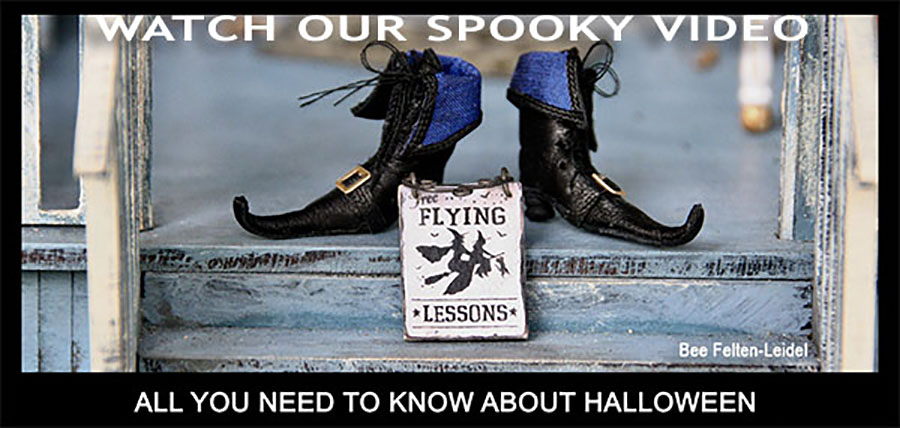HALLOWEEN HISTORY
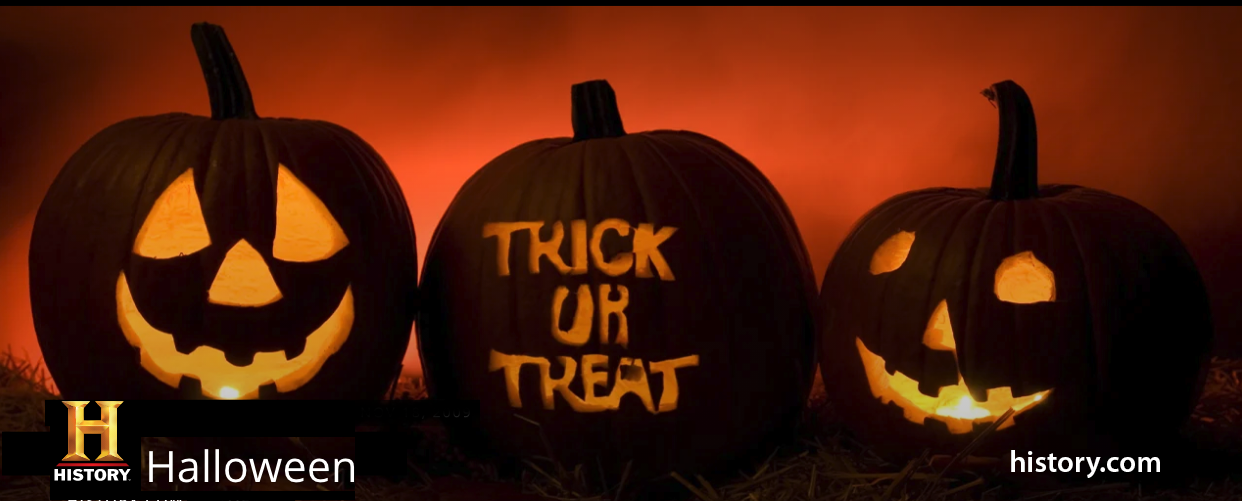
[October 2021 | San Juan Silver Stage | Kathryn R. Burke]
Halloween. Is it Christian or Pagan? Celtic or Catholic? Why do we put candles in pumpkins and call them “jack-o’-lanterns”? How come kids gorge on candy on October 31? Why costumes, bobbing for apples, and “trick or treating”? And what’s with ghosts and goblins, headless horsemen, and witches on broomsticks flying over the full moon? Like Christmas, the traditions relating to this holiday, which heralds the end of summer and the onset of winter, have a long history. And its worldwide customs have a lot of similarity.
Click here to view our Halloween History Video
Samhain
When did it begin? Samhain, an ancient three-day Celtic pagan festival, is likely the precursor to today’s Halloween. The word samhain means “summer’s end” and comes at the time of harvest season, when people stocked up for the “dark days” of winter that stretched ahead. The ancient Celtic calendar, serving people in the Irish Isles and parts of Northern Europe, was divided into light and dark and was celebrated with four fire festivals: spring and autumn equinox—when day and night are of equal length—and summer and winter solstice—the longest and shortest days of the year.
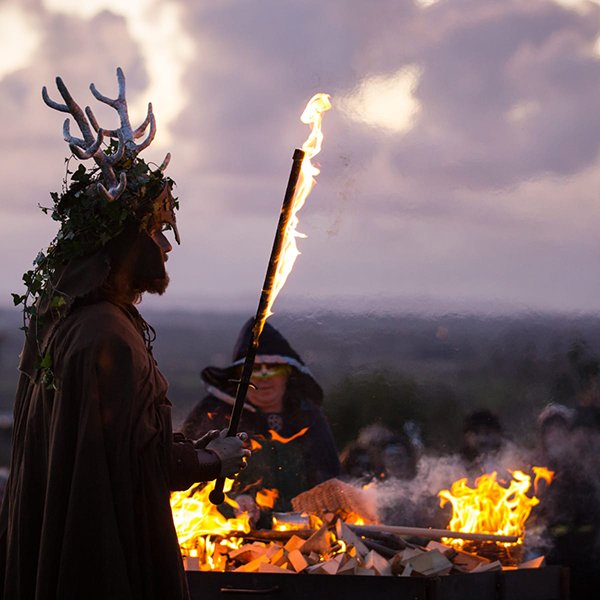
Samhain, the start of the Celtic new year, represented death and rebirth as well as the end of the growing season and the beginning of winter (a time also associated with increased human death), and so was doubly symbolic. It was believed that ghosts of the dead, denizens of the Otherworld, returned to earth and could be visible to the people who lived there. The curtain, or veil, dividing the two worlds was thin and easily crossed over by ghosts and evil spirits. To appease the gods and protect people from evil, crops and animals were sacrificed, burned in protective bonfires. Attendance was mandatory with punishment (usually illness or death) to those who failed to participate. Fortune-telling took place as well, and many people wore masks or costumes (masquerading as animals or spirits), hoping they could fool and ward off harmful spirits. Thus, they were “tricksters” offering “treats” (sacrifices).
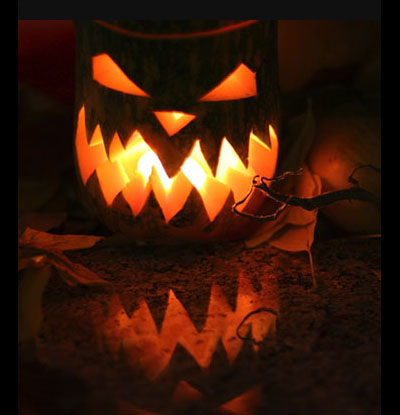
Jack-o’-Lantern
Jack-o’-lanterns also originated in Ireland, a tradition carried over into modern times. People carved scary faces into turnips or potatoes. In England, they used beets. (The choice of canvas was based on vegetable availability.) When immigrants reached America, they used pumpkins—bigger, easier to carve, and plentiful. The concept comes from an Irish folktale about a man named Stingy Jack who, after repeatedly fooling the Devil, was not allowed into heaven or hell and will spend eternity wandering the earth with only a dark coal, which he carved into a turnip, to light his way. [Source] Interestingly, in America, carved pumpkins were first associated with Thanksgiving, clear back in 1895. [Source, NY Times]
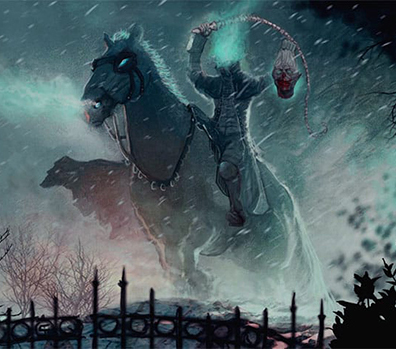 Headless Horseman
Headless Horseman
Headless horsemen (or women) are another legendary aspect of Samhain carried forward into modern-day Halloween. In ancient Celtic tales, the Lady Gwyn is a headless woman dressed in white who chases night wanderers and is accompanied by a black pig. Tales of headless horsemen continued into the Middle Ages. The Dutch and Irish legend of Dullahan (or Gan Ceann) recounts the story of Grim Reaper-like characters carrying their heads and riding horses with glowing red eyes. Washington Irving’s 1820 tale, The Legend of Sleepy Hollow, relates the story of a headless horseman who terrorizes the real-life village of Sleepy Hollow. His is considered one of America’s first ghost stories—and one of its scariest.
 European History and Tradition
European History and Tradition
In the 400 years following the Romans conquering most of the Celtic lands, two Roman festivals were combined with Samhain. Feralia commemorated the passing of the dead, and the celebration of Pomona honored the goddess of fruit and trees. This may have been the origin of bobbing for apples on Halloween.
During the 6th Century, the Catholic Church, probably attempting to replace a Celtic festival with a Christian one, declared a new festival—“All-hallows,” preceded by All-hallows Eve”—to honor Christian martyrs and saints. In the mid-800s, the celebration was moved to November 1 to coincide with Samhain. Ancient practices still prevailed, with bonfires and costumes (representing the spirit world), offerings (food and drink) to the poor, and tricks and pranks.
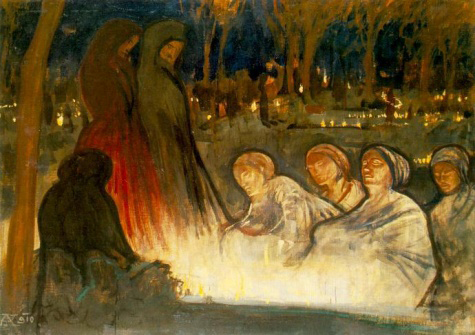
In 1000 AD, the church named November 2 All Souls’ Day to honor the dead. Many of the pagan traditions prevailed, except now we had costumes as saints and angels in addition to spirits and ghosts. In Europe, on All Souls’ Day, the poor begged for food and were given homebaked “soul cakes” in return for a promise to pray for the family’s dead. Today’s soul cakes are more likely to come in a candy wrapper, and most contain chocolate.
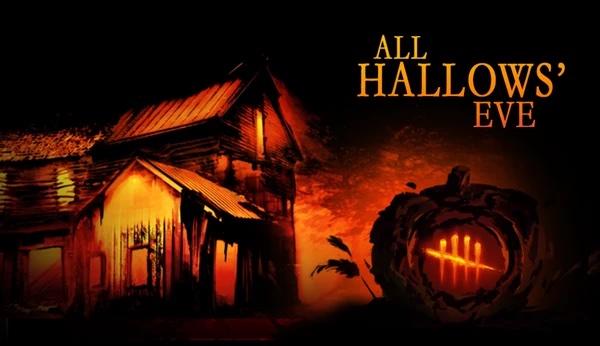
Initially, the North American version of Halloween was heavily influenced by religious beliefs. The colonials were rigid Protestants; saints and pagan gods were definitely not a part of their belief system. In time, as more ethnic groups arrived and harvest celebrations merged with Native American customs, a sort of hybrid Halloween developed. Over time, the “eve” became more popular than the day that followed it, and All-hallows Eve evolved into Halloween Eve, with celebrants participating in pagan-turned-Christian practices that soon became more about community and neighborhood activities.
Today, children and adults dress up in costumes and go door to door, not to distribute soul cakes but to collect candy (the treats), and occasionally do a trick when they don’t get any (like toilet-papering houses). People gather for parties, carving pumpkins, bobbing for apples, lighting bonfires, telling scary stories, and—for the adults—imbibing fall-flavored adult beverages.
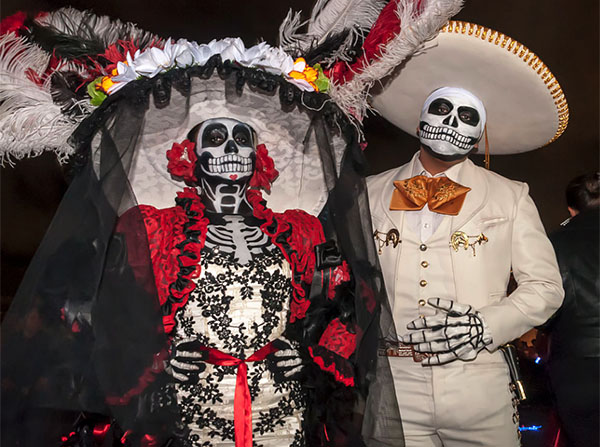
The Day of the Dead, or Dia de Muertos, is the Mexican adaptation of the traditional Catholic All Saints Day held November 1. For many Hispanic families, it is a major holiday when they remember and honor departed loved ones and family members. Celebrations include leaving gifts and offerings for the dead at cemeteries, street parades, and parties with elaborate costumes.
Today
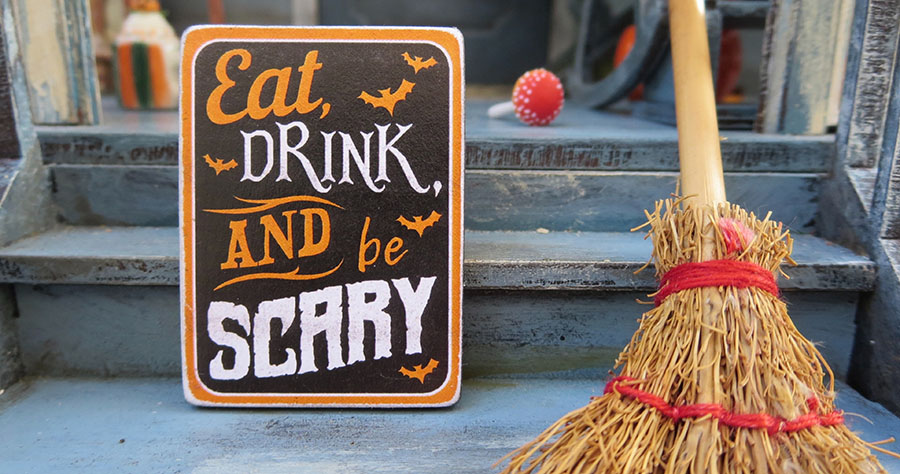
.
Today, Halloween has lost most of its superstitious and religious overtones, no longer celebrating saints or spirits or concerned with a bountiful harvest, since most of our food comes from the grocery store, not a family farm. But gathered around the bonfire to listen to scary stories, it’s still easy to believe in witches on broomsticks and headless horsemen.
Trick or Treat
Although it is unknown precisely where and when the phrase “trick or treat” was coined, the custom had been firmly established in American popular culture by 1951, when trick-or-treating was depicted in the “Peanuts” comic strip. In 1952, Disney produced a cartoon called “Trick or Treat,” featuring Donald Duck and his nephews, Huey, Dewey and Louie. [Source]
Samhain Stories
Samhain is a pagan religious festival originating from an ancient Celtic spiritual tradition. There are many monsters, myths, and legends associated with this celebration, which took place at the end of harvest season, which also ended the Celtic year. Click here to read more and hear Timothy Dickinson of the History Channel sharing stories of Samhain.
Credits
1. Page Banner, history.com”
2. “All You Ever Wanted to Know About Halloween.” Flying Lessons, photo by Bee Felten-Leidel on Unsplash
3. Samhain Festival. Celebration in Glastonbury. Public domain.
4. Jack-o-Lantern. history.com
5. The-Dullahan. The Dullahan of Celtic Mythology. By Connor- 2019
theirishplace.com/heritage/the-dullahan/
6. All Souls Day. Aladar Korosfoi-Kriesch 1910. Public Domain
7. All Hallows’ Eve. Dead by Daylight
deadbydaylight.fandom.com/wiki/All_Hallows%27_Eve
8. Día Del Muertos. Citation unknown.
9. Eat, Drink, and be Merry.
bee-felten-leidel-6gtta8WZ65E-unsplash

